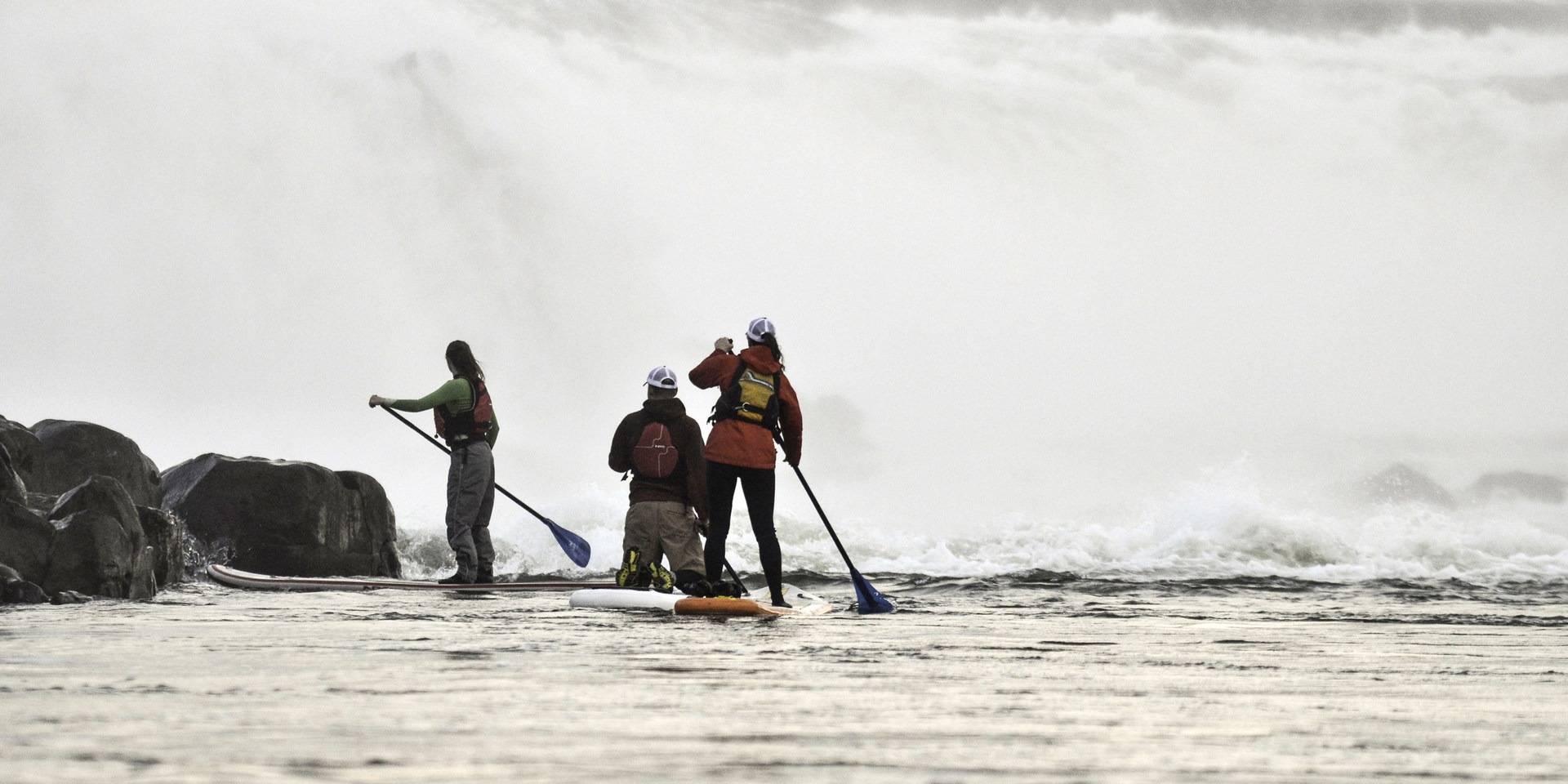The short paddle to the base of Willamette Falls not only provides the best vantage point of the monstrous cascade, it is also an eye-opening historical tour of the oldest U.S. town west of the Rocky Mountains.
As the largest waterfall in the Pacific Northwest and the 17th-widest in the world, Willamette Falls is truly a natural wonder. Its size is even more impressive now, as most other comparable waterfalls have long been submerged due to the construction of dams (think Celilo Falls on the Columbia River, once the sixth-largest in the world).
Like Celilo Falls, the 40-foot cascade has long drawn populations to its power. Native Americans first settled in the area to fish for salmon heading back upstream. In 1829, John McLoughlin established a land claim along the shores of the falls for the Hudson's Bay Company, and in 1845 Oregon City became the first incorporated city and seat of the Oregon Territory. Later, in 1888, the Willamette Falls Electric Company built a four-turbine hydro-electric plant that ran electricity 14 miles upstream to Portland, forming the first long-distance electrical transmission in the U.S. Seven years later, Portland General Electric started a second hydro-electric plant on the Linn City side of the falls that is still operational.
As you paddle south, eventually both sides of the Willamette River become flanked by enormous and spectacularly eerie industrial complexes. Interestingly, a full-scale paper manufacturing still functions amidst all of the abandoned industrial waste. Blue Heron Paper Company (named for the bird that still frequents the falls) operates the facility on the eastern banks, and the West Linn Paper Company runs the plant on the western shore.
If you paddle near sunset and you'll enjoy an amazing show of tree swallows as they skim just above the turbulent current in search for food.
























Comments
Sign In and share them.